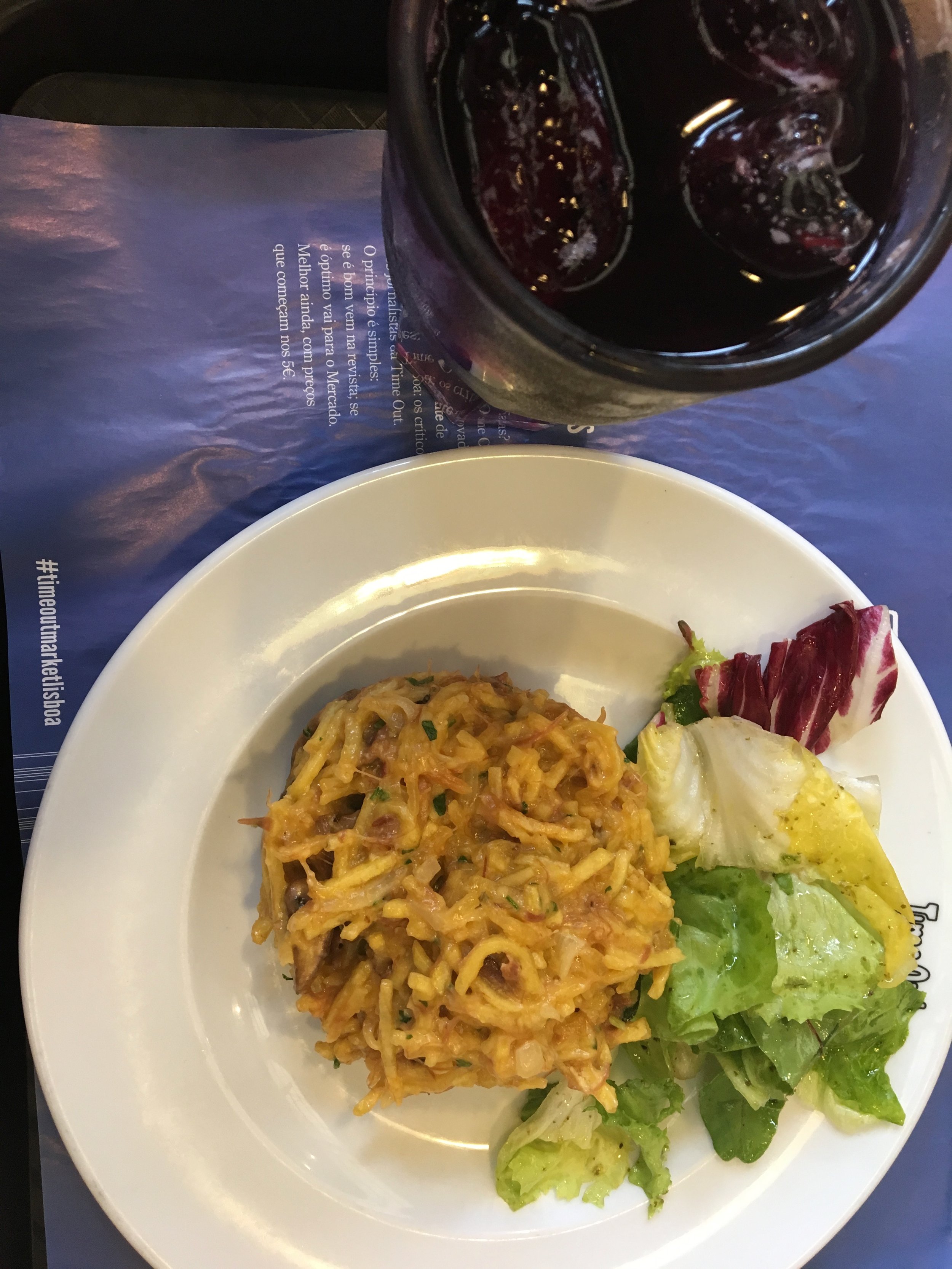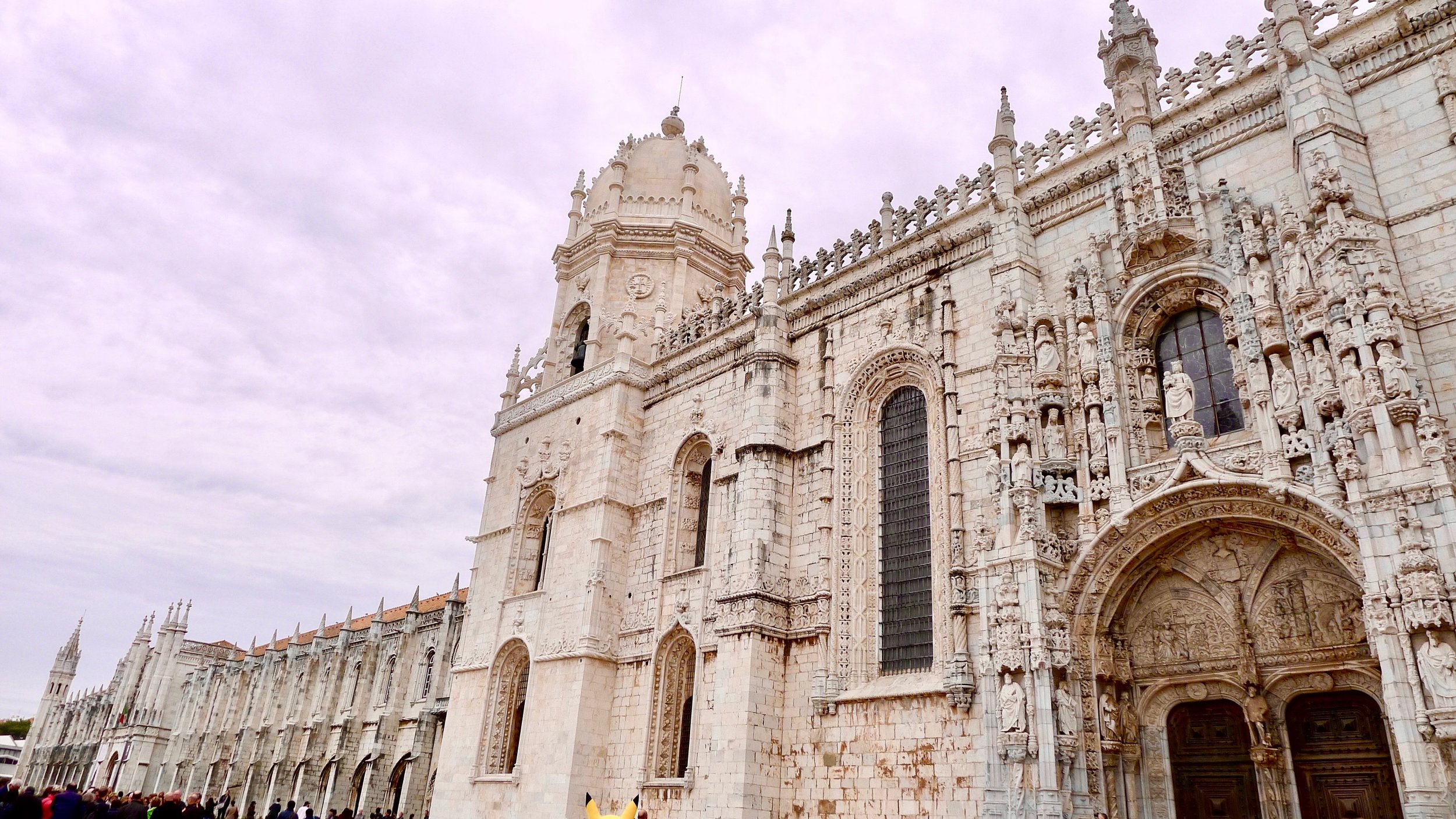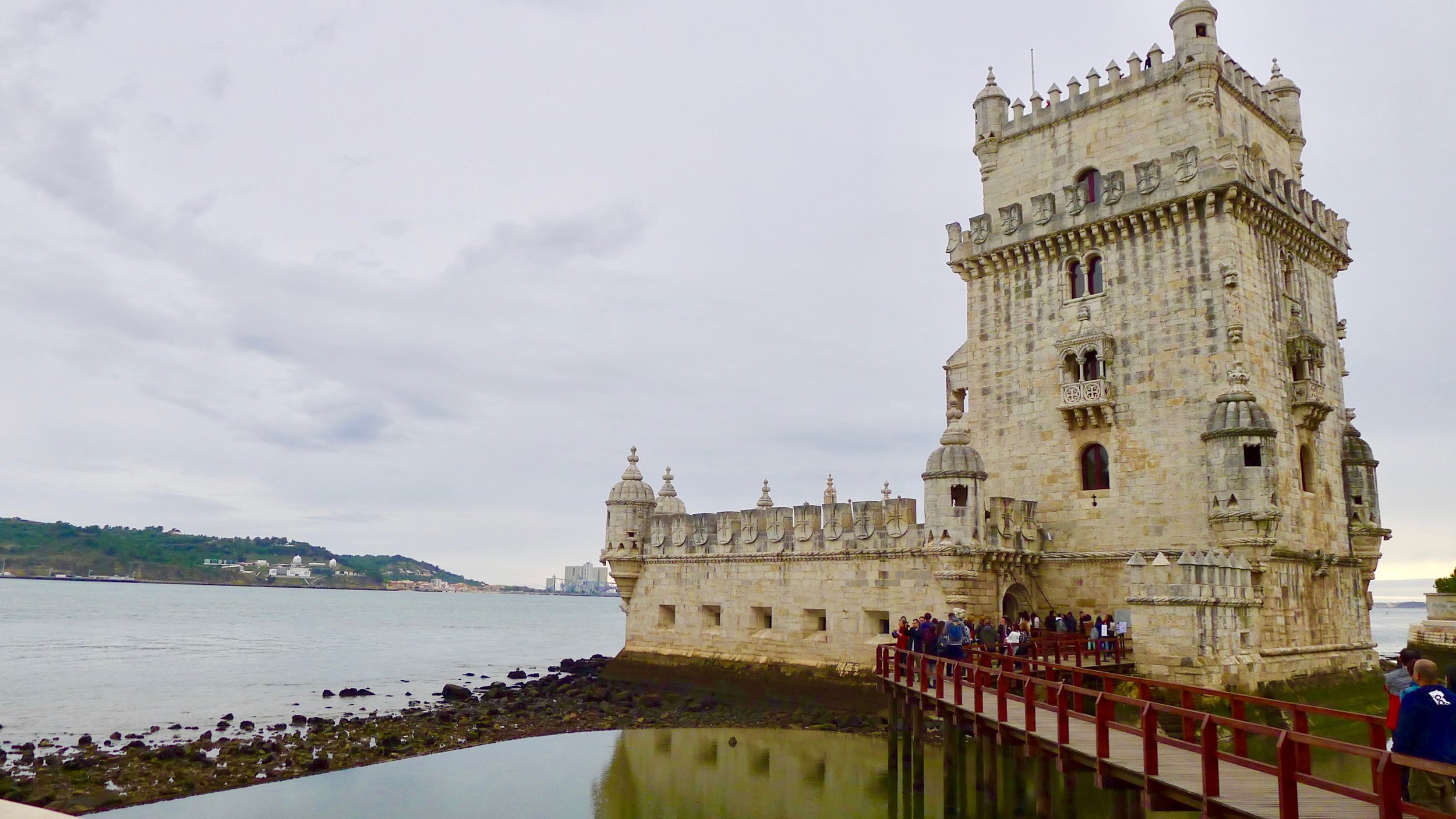Lisbon in a weekend - Day 1
Lisbon is the capital of Portugal — that was about as much as I knew about it before deciding to visit the city. With only two days to visit the city, I immersed myself in its streets and was mesmerized by its deep-seated pathos and subdued vitality.
Located on the western side of the country, facing the Atlantic Ocean, it is Europe’s westernmost capital. Lisbon is enclosed in a natural bay created by the Tagus river estuary, which is now scenically crossed by the Vasco de Gama and the 25 Abril bridges. nd I have to admit I didn’t know what to expect about it.
Its location at what was once considered the end of the known world rendered it a remote city compared to the other more central capitals of the western world. Nonetheless, its beautiful harbor made it an ideal settlement: from being a commercial hub for the Phoenicians to being an outpost for colonialist explorations into the new world in the 15th century.
This offbeat city’s peculiarity derives from its rich history combined with a sense of Saudade — as the Italian author Antonio Tabucchi, who studied Portugal at length, explained it is a sense of melancholy for what was and of hope for the future. The urban center seems untouched by the modernization that affected most capitals and the fact it still holds on to its port city traditions is palpable. Lisbon’s decadent architecture is colored by the vibrant azulejo tiles that cover the buildings’ walls, the sorrowful notes of guitars playing fado can be heard coming out from restaurants and hiking up and down its steep streets you can’t help but feel transported into a different epoch.
Rua Augusta Arch
Compared to other European cities you’ll be surprised at how cheap eating and living in the city is. For example, a UBER from the city center to the airport will cost you around €6 to €8, a large glass of sangria around €1,50 and the best pastéis de nata (the ones you’ll find in Belem) are only €1,05.
So here’s what you must see if you’re in Lisbon for the weekend!
DAY 1
If you’re not a fan of cabs and UBERs and want to feel like a local taking the subway from the airport is fairly easy. The international airport is well connected to the city center and in about 20/30 minutes you’ll find yourself at your hotel. You’ll find that the Lisbon metro is a pleasant experience: modern, cheap and safe, it is the quickest way to get around — just know that it closes around 1 am. If you’re planning to travel around with the Viva Viagem public transport card know that you can’t upload different types of fares (e.g., subway and trains), a solution is to charge your card with “zapping” credit to spend on whichever transport means you choose.
Avenida da Liberdade is a good spot is where I started my exploration of the Pombalina downtown neighborhood; walking down the boulevard I got the opportunity to stretch my legs for the walking day ahead while doing some window shopping from the city’s most luxurious stores. The Rambla-like avenue widens into Praça do Restauradores; a square that commemorates the Portuguese liberation from Spanish domination in 1640. Stopping for my morning cappuccino at Fàbrica de Nata (where I bit through my first pastéis de nata of the day) I had a clear view of Palàcio Foz on the opposite side of the square. The pink-tinted, villa-like building lines a side of the square and now hosts the Museu Nacional de Desporto (national museum of sports), as well as a tourist center that can answer any questions visitors might have.
Rossio Square (Pedro IV Square)
It’s at Rossio Square (Pedro IV Square) that I truly started noticing the abundant decors and details that add uniqueness to the city. The square’s black and white pavement evokes the sea’s ripples, it has historically been the place of choice for people to gather and observe key moments, such as celebrations or executions. If it hadn’t been early morning I definitely wouldn’t have lost the chance to taste a Ginjinha or Ginja — a traditional Portuguese cherry liqueur also served in small chocolate cups — at the bar that bears its name and is located on the right side of Lisbon’s National theater. To recognize the best Ginjinha check that it was made in Óbidos and Alcobaça, but be aware that this sour cherry liqueur has just the right mix of sweet-to-sour and is very refreshing, so drink responsibly!
Tarte de amêndoa (almond tart) and the Bolo de Arroz (rice cake)
at Confeitaria Nacional in Praça da Figueira
I could only drool the marvelous pastry shops I saw to get to Confeitaria Nacional in Praça da Figueira. Given my brief stay in the city, I wanted to try as many specialties as possible, so trying the pastries made by the oldest and most traditional bar in the city was a must. I tried the Tarte de amêndoa (almond tart)and the Bolo de Arroz (rice cake).
Another plus is that in Lisbon the coffee is remarkable, and for an Italian to admit that it means it must be extremely good! Coffee might just be as significant to the Portuguese as it is for the Italians and everyone is just aware of what to order that many bars don’t deem necessary having a list or menu of their coffee options. Basic espressos can be ordered by requesting um cafè, um pingo has milk added to it, and the closest thing you’ll find to an americano is called um abatanado.
Casa Portuguesa do Pastel de Bacalhau
Continuing my food tour a must stop is Casa Portuguesa do Pastel de Bacalhau. for the codfish cakes with creamy Serra de Estrela cheese — I’ll just say I immediately got over my aversion to fish after eating this. This bacalhau sanctuary is on one of the main streets leading to the sea, Rua Augusta.
On your way there check out the streets on your right until you find Rua de Santa Justa so that you won’t miss out on the beautiful Santa Justa lift. The lift was built in the early 1900s as a way to connect different city levels and it is now one of the main touristic attractions. It is a lovely structure to see, but beware of the long waiting line to get up — given my tight schedule I decided to skip it.
Walking down Rua Augusta I headed towards the majestic arch at the end of the road. This magnificent gate is the entrance to Praça do Comércio, the grandest square in Lisbon.
Detail of Rua Augusta Arch
The wide square opens up to the river Tejo and is still referred to as Terreiro do Paço (palace yard) as the Royal Ribeira Palace was located here until its destruction in the 1755 earthquake. The square was rebuilt and made wide as a safety precaution for future earthquakes so that people can run into the square and be safe. In the center of the square is a bronze equestrian statue of King José I, inaugurated in 1775. This square was also the setting for the assassination of Carlos I and his first son Luís Filipe in 1908, he was the second to last king of Portugal. His second son’s Manuel II reign lasted only two years as the dissolution of the monarchy occurred in 1910.
Praça do Comércio
Opposite the arch, on the Tejo river bank is Cais das Colunas (Pier of the columns), the royal gateway for guests coming in from the sea. This romantic marble stairway, guarded by the two parallel white columns leads down to the sea. Depending on the tide you might find the columns are flooded, at other times can walk down the steps.
Cais das Colunas, in Praça do Comércio
Now’s the time for a hike! When visiting Lisbon by foot arm yourself with comfortable sneakers. This is a very hilly city: steep streets connect the neighborhood of Baxia to Chiado and Barrio Alto. Chiado is the first stop on our itinerary, one of the main shopping areas in the city, between Rua do Carmo, Rua Garrett, and Rua da Misericordia you’ll find both high-street brands and some unique local stores. For example, you can try on some leather gloves from the historic artisans in Luvaria Ulisses, you can roam in the vintage selection of garments in A Outra Face da Lua, and you can also visit one of the smallest bookstores in the world, Livraria do Simão.
Follow up Rua do Carmo until you get to the Largo do Carmo where a very unexpected sight is located: Convento da Ordem do Carmo. This convent was built at the end of the end of the 14th century to host over 70 clergy. Sadly the striking medieval construction was a casualty of the 1755 earthquake, which significantly damaged the building. Though repairs were done through the years it was never fully rebuilt, for a period of time it was occupied by the Police Royal Guard, infantrymen, cavalry and eventually Archaeologists made it into a museum. Walking into this “exposed” church is a way to envelop yourself in a bizarre and surreal atmosphere - feeling the force of the calamity that laid this building bare.
Convento da Ordem do Carmo
Make your way towards Praça Luís de Camões, the square dedicated to the poet of the epic Portuguese poem Os Lusíadas, and follow down Rua do Alecrim towards the sea. You will cross over the notorious pink street (Rua Nova do Carvalho in Cais do Sodre neighborhood) empty during the day and crammed at night with all of the great bars. This used to be the city’s red-light district, easily accessible to sailors looking to enjoy themselves. Since it was painted in 2013 the street’s infamous history was taken over by a livelier and progressive new spirit.
The next stop on Avenida 24 de Julho is the old Mercado da Ribeira. This market used to be the city’s food market, and in 2014 it was taken over by Time Out magazine, which brought together restaurants and chefs to create a food hall with a wide variety of local delicacies.
I tried the bacalhau a bras - a salted cod frittata with thinly sliced onions and potatoes - by Chef Miguel Castro e Silva. An incredibly delicate and hearty dish that embodies what Portuguese cuisine is all about. I also tried a selection of croquettas from Croqueteria - which offers traditional meat croquettes, all accompanied by a wonderful glass of white wine Sangria.
Hop over to Cais do Sodré station just across the street from the market. Here you can catch a direct train to Belem to get there in around 10 minutes (alternatively you can walk there in about one hour).
The first stop in Belem is the place it owes its name to. The parish of Belem used to be an autonomous municipality - named after Santa Maria de Belem. While the namesake tower is a must-see, the reason I believe you must come here is the Jeronimos Monastery. The stunning monastery was erected by King Manuel I O Venturoso (the Adventurous) to celebrate Vasco De Gama’s return after discovering the route to India. Here gothic architecture meets the intricate motifs of the renaissance, inviting the viewers who stop to admire its facade to walk into the stunning building.
The south portal of the Jeronimos Monastery
As you walk by the monastery check out the elaborate ornaments that frame the south portal, much larger and majestic compared to the Axial portal (entrance that leads to the main altar), and the decorations on its pinnacles and gables are sublime.
The cloister
As you enter the church you’ll be greeted by Vasco De Gama and Luís de Camões - they’ve been resting here since the late 1800s. The obscure solemnity of the structure is only interrupted by the fiery colors of the stained glassworks that grant access to daylight high above visitors.
The main church opens up again onto the cloisters. Two floors of sophisticatedly carved limestone, mullions ornate as if lined with delicately knit lace, narrate the stories of sailors and their adventures at sea. The richness of the scenery was meant to represent Portugal’s growing power. There’s a lot more to explore, from the refectory adorned with azulejos, to the adjacent Archeology and Maritime museums.
Time for another food stop on our tour. Very close to the Jeronimos Monastery is the original Pasteis de Belem bar, where you can taste the original Portuguese egg tarts with the secret recipe that was invented right here, in what used to be a sugar cane refinery. I probably overdosed from the number of pasteis de nata I ate in a weekend in Lisbon. I couldn’t get over the mouthwatering contrast between the crunch of the flaky pastry dough with the lush cream. Top them with powdered cinnamon for that extra spice.
Pasteis de Belem
To complete your day head to the Torre de Belém (Torre de São Vicente), the fortified tower that overlooks the Tagus river. It was built as a defense structure since King John II deemed that the existing fortifications were not sufficient. Given its location at the mouth of the Tagus river it also served as gateway for navigators leaving and entering Lisbon to explore the world. The tower’s interior, its cannon-lined windows and terraces can be visited for around 6€. Both the Monastery and the Tower of Belem have been named a UNESCO World Heritage site.
Torre de Belem orTorre de São Vicente
You can make your way back to the historic center of Libson walking along the river Tagus and enjoying the view of the sunsetting in the distance.














